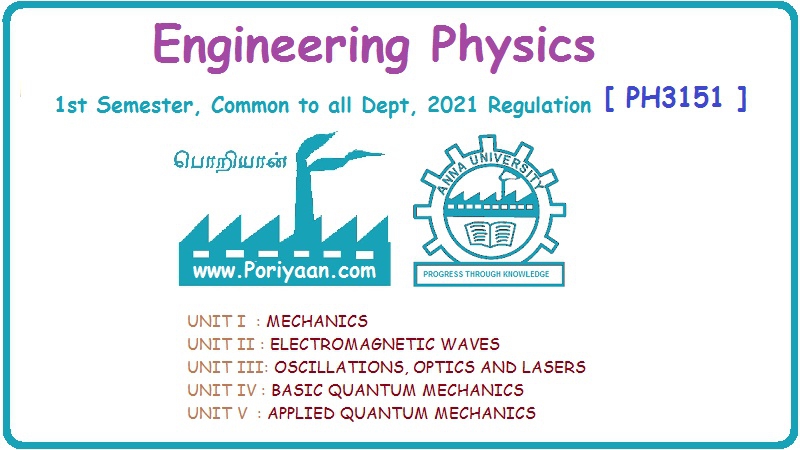Engineering Physics: Unit III: b. Optics
Theory of Air Wedge
Definition, Experiment, Description, Applications
Air-wedge arrangement is used to find the thickness of a thin sheet or a wire. It is also used to test the planeness of the glass plate.
THEORY OF AIR WEDGE AND EXPERIMENT Air-wedge arrangement is used to find the thickness of a thin sheet or a wire. It is also used to test the planeness of the glass plate. A wedge shaped (V-shaped) air film enclosed in between two glass plates is called air wedge. When two optically plane glass plates (A & B) are inclined at a very small angle 0, a wedge shaped thin air film is formed between the surfaces as shown in fig. 4.11. The thickness of the air film increases outwards from the line of contact 'O' of the glass plates. The light rays from a monochromatic light source is made to fall perpendicularly on the film. The incident rays of light is partially reflected from the upper surface of the air film and partially reflected from the lower surface of the air film. These two reflected rays will interfere and a large number of straight alternative bright and dark fringes are formed. If t is the thickness of the air film corresponding to the nth dark band with wedge angle o at a distance of x metre from the edge of contact, then the path difference between the two reflected rays (Fig 4.12) For air film, refractive index of the film μ = 1 cos r =1, since angle of incidence is very small, so angle of refraction is also very small ie., r = 0; cos θ = 1 Now, 2t = n λ ….(2) where λ - wavelength light Since x is the distance of the nth dark band from the edge of contact O, substituting equation (3) in equation (2), for the nth dark band Similarly, for the next dark band ie., (n + 1) th dark band 2(x + β)θ=(n + 1)λ ... (5) where β is the fringe width subtracting equation (4) from equation (5), we have The same relation is obtained if we consider the bright fringe. The given wire whose thickness d is to be measured is placed inbetween the two glass plates to form a wedge shaped air film. Now if l is its distance from the edge of contact (length of the wedge), then from fig 4.13. Substituting eqn (7) in (6) Thus, thickness of very thin specimen can be determined by using the interferance technique in wedge shaped film. Determination of diameter (thickness) of a wire or thickness of a thin sheet of paper (Experiment) An airwedge is formed by keeping two optically plane glass plates in contact along one of the edges and a thin wire near the other end, parallel to the contact edges of the glass plates. Therefore, glass plater are inclined at a very small angle (one end of these two glass plates may be tied using a thread or a rubber band). This is called airwedge arrangement Description This arrangement is kept on the bed of the travelling microscope (Fig 4.14). A parallel beam of monochromatic light from a light source is reflected down on the air wedge by a glass plate kept inclined at an angle 45° to the horizontal. Interference takes place between the light reflected at the top and bottom surfaces of the air film between the two glass plates. Interference pattern (Fig 4.15) consisting of a series of bright and dark bands of equal width is viewed by a travelling microscope arranged above the airwedge. Microscope is focussed on these fringes and the vertical cross wire is made to coincide with nth bright band near the edge of contact of the glass plates. The reading on the horizontal scale of the microscope is noted. The cross wire is made to coincide with successive 5th fringes (n +5, n + 10 ... n + 40) and the corresponding microscope readings are noted. The readings are recorded in the table 4.1. From the table, the average fringe width β is determined. Using the microscope, the distance l between the edge of the contact and the wire is also measured. Knowing the wavelength of the monochromatic light source, the thickness of the wire is found out using the formula.Definition
Theory of air wedge experiment :
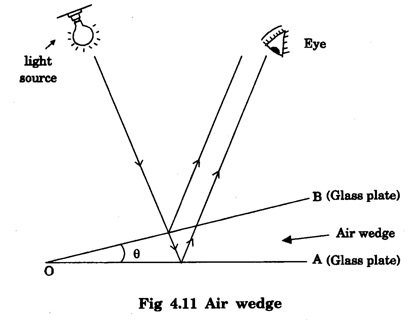
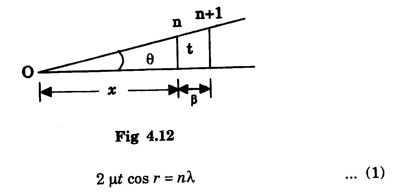



Thickness of a thin wire and very thin foil
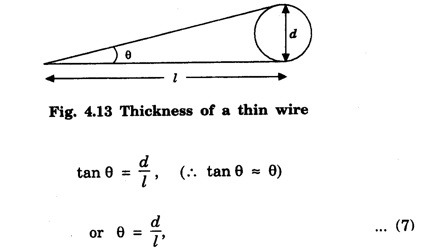
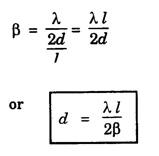
Applications of air-wedge
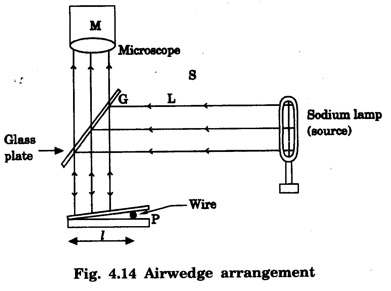
Experiment
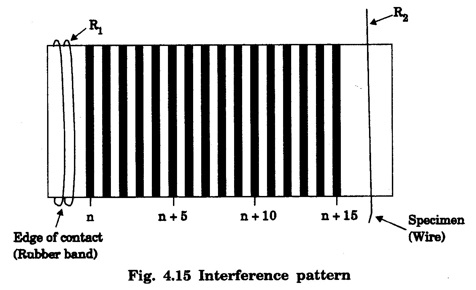

Engineering Physics: Unit III: b. Optics : Tag: : Definition, Experiment, Description, Applications - Theory of Air Wedge
Related Topics
Related Subjects
Engineering Physics
PH3151 1st semester | 2021 Regulation | 1st Semester Common to all Dept 2021 Regulation
